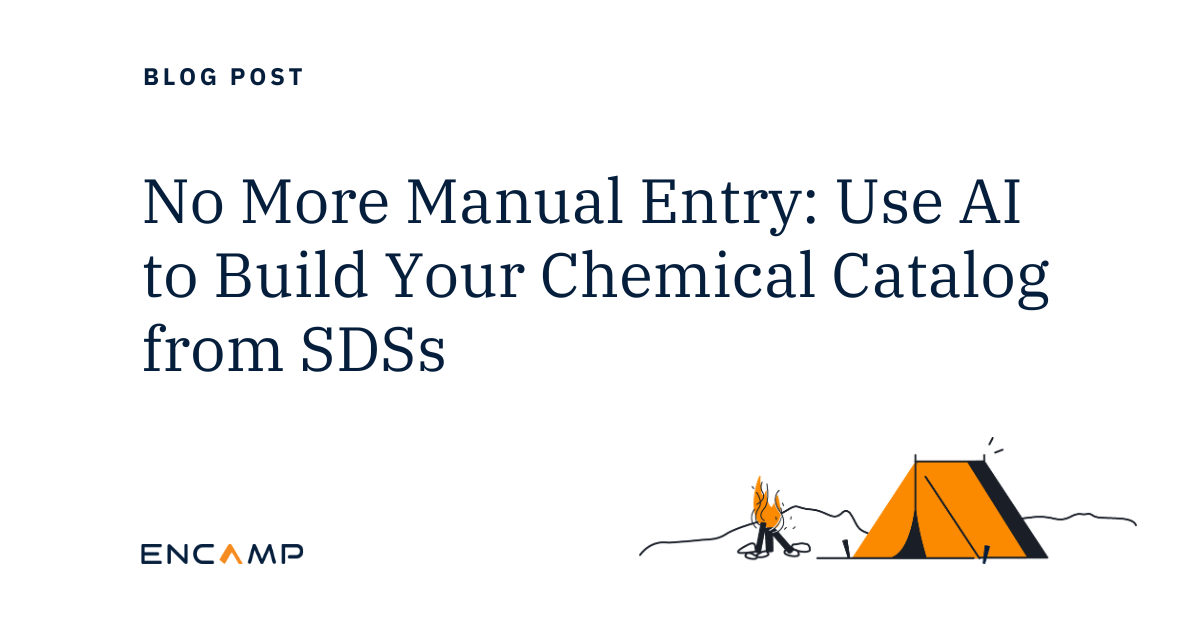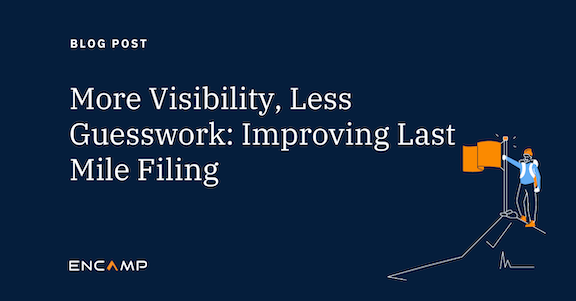If you manage environmental compliance for a facility that generates hazardous waste, it’s essential to track your facility’s generator status accurately. Failure to do so may result in unwanted attention from the EPA. In this article, you’ll learn how to assess your facility’s generator status, when to submit notifications to the EPA, and the implications of generator status on required compliance activities.
Hazardous waste generators categories
The EPA requires hazardous waste generators to self-classify their facility as the correct generator category. To choose the right category, facilities must look at the quantity of hazardous waste generated each month and the amount of onsite storage before shipping.
Generator categories are Very Small Quantity Generator (VSQG), Small Quantity Generator (SQG), and Large Quantity Generator (LQG), and their monthly generation and onsite storage limits are as follows:
Very Small Quantity Generator (VSQG)
Generation: Less than 100 kg (220 lb) of hazardous waste generation and less than 1 kg (2.2 lb) of acute hazardous waste generation per calendar month
Storage: Less than 1,000 kg (2,200 lb) of hazardous waste storage and less than 1 kg (2.2 lb) of acute hazardous waste storage at any one time
Small Quantity Generator (SQG)
Generation: Between 100 kg (220 lb) and 1,000 kg (2,220 lb) of hazardous waste generation and less than 1 kg (2.2 lb) of acute hazardous waste generation per calendar month
Storage: Between 1,000 kg (2,200 lb) and 6,000 kg (13,200 lb) of hazardous waste storage and less than 1 kg (2.2 lb) of acute hazardous waste storage at any one time
Large Quantity Generator (LQG)
Generation: More than 1,000 kg (2,200 lbs) of hazardous waste generation or more than 1 kg (2.2 lb) of acute hazardous waste generation per calendar month
Storage: Exceeds 6,000 kg (13,200 lbs) of hazardous waste storage or 1 kg (2.2 lb) of acute hazardous waste storage at any one time
Notifying the EPA of generator status
To identify the correct category, a generator must complete accurate waste characterization to determine which wastes are hazardous and then properly track their monthly generation and onsite storage of these wastes. Once a facility self-classifies, they must submit an initial notification to the EPA, commonly referred to as the 8700-12 or Site Identification Form.
However, what happens if the amount of hazardous waste generated at your facility changes? The EPA requires that in the event of a generator status change, or changes to facility information (for example, facility contact change), a generator must file an Update Notification in a “timely matter.”
It’s important to note that the Federal EPA does not give a specific timeline for filing the Notification, but some states do. For that reason, it’s crucial to understand the particular requirements of your facility’s location.
Let’s look at an example of how this works:
A manufacturing facility has registered as an SQG of hazardous waste because they generate a few hazardous process wastes, which totals about 800 lbs per month. Sometimes it’s a little more, sometimes a little less, but always within the SQG limits.
Suddenly, the business has picked up, and they are now generating around 2,500 lbs of hazardous waste per month. They realized they had an increase in waste and exceeded the SQG generation limits because they were tracking their monthly generation.
In this case, the facility will immediately submit an Update Notification to the EPA, indicating their new status as an LQG and a comment that their business has increased and they are now generating more hazardous waste. In response, the EPA will update its records and register the facility as an LQG.
The facility will immediately begin managing its waste per the more stringent LQG requirements, which could include developing a contingency plan, storing the waste onsite for a shorter period before shipping, and completing a biennial report.
In contrast, if the facility reduces its business or changes its processes and consistently generates less than 2,200 lbs of hazardous waste per month, it would want to submit another Update Notification lowering its generator status to SQG.
Under-classifying a facility’s hazardous waste generation
It’s important to remember that a company never wants to under-classify a facility’s hazardous waste generation because that would violate EPA regulations. Hazardous waste generators can expect routine EPA inspections, which include a review of hazardous waste generation and current storage, characterization information, and inspection records. To learn about what records you need to keep, for how long, and in what format, get our guide to
In addition, the EPA has visibility into hazardous waste shipments because Treatment, Storage, and Disposal Facilities(TSDF) send manifests directly to the EPA. With that in mind, a facility shipping a larger-than-expected amount of waste, given its registered generator status, would risk triggering an EPA review or inspection.
Over-classifying a facility’s hazardous waste generation
A company should ensure its hazardous waste generators are not under-classified to avoid violations. However, a company would also want to prevent over-classification because the higher the generator category, the more requirements the site will have to meet.
For example, let’s say that an LQG registered site historically generated a lot of waste but has since removed those generating processes and now consistently generates a much smaller amount of waste. It is in the company’s best interest to submit an Update Notification to re-classify the site as a VSGQ.
As an LQG, a facility has many more requirements, including maintaining an up-to-date contingency plan, shipping their waste every 90 days, completing weekly inspections, and completing biennial reports. As a VSQG, the facility would no longer have to meet these more stringent requirements.
Fewer requirements mean less opportunity to miss a requirement and trigger a violation. In addition, higher-category generators are typically inspected more frequently than lower-category generators. So a company can lower its risk of inspections and violations by reducing its generator status if the waste generated from a site has decreased.
Submitting an Updated Notification to the EPA
The best way for a company to avoid violations around their registered generator category is to ensure that they submit an Updated Notification if an increase or decrease in hazardous waste generation causes a change in their generator category.
For an increase in the generator category, the facility should submit the Update Notification as soon as they recognize that they have changed the category, ideally within the month that the generator category changed.
For a decrease in hazardous waste generation, the company may want to wait a few months to verify that its generator category has genuinely changed and then lower its generator category once confirmed.
A company should also ensure that they are tracking their generation and maintaining documentation of the information they have used to determine their generator status (including waste characterization) in the event of an EPA inspection.
Encamp can help
Ensuring that hazardous waste-generating facilities are correctly classified and registered is an important step that a company can take to avoid EPA inspections, violations, and fines. However, the process can sometimes feel overwhelming with so much on the line. Encamp can help.
Encamp solves the complexity of environmental compliance with high-tech solutions and high-touch expert support. We help enterprises transform compliance programs and human processes into a technology-driven system that lays the foundation for accurate and ongoing environmental compliance. Click here to learn how Encamp can help you create a more compliant workplace.
Jenn Mester
Jenn joined Encamp in 2022 with more than 15 years of environmental compliance experience. Prior to joining Encamp, she spent three years as the head of the Environmental Department for the City of Cleveland, Department of Public Utilities, where she managed a team of HazMat professionals and oversaw all aspects of environmental compliance for a large electric, water, and sewer utility. She also has experience as an EHS Manager in the chemical and biochemical sectors, and eight years of experience in Environmental Consulting. Jenn maintains certification as a Certified Hazardous Materials Manager (CHMM). She is passionate about protecting the environment, understanding complex environmental regulations, and helping companies achieve compliance with these regulations.



